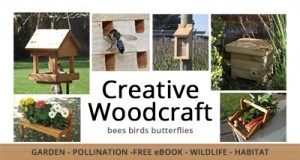Where to buy nest boxes
Retail stores carry boxes, some suitable and some not. The imported nest boxes usually offered at at discount prices at home and garden centers should be approached with caution! These boxes are generally mass produced, made of thin wood and usually precariously held together with staples or brad nails.
A Good Bird Nest Box to Endure All Seasons
Nesting Boxes for Cavity Nesting Birds are available at Creative Woodcaft and are part of our Conservation Products Range. These Nest Boxes have been designed with consultation and input from many experts with New Zealand Birds in mind. Our superior range of nesting boxes have many key features built in as standard…..and have a unique system to allow easy installation and access for inspection and cleaning…
Purchase your very own Superior Quality Nesting Box
These are some of the standard features of our Bird Nesting Boxes:
1. Roof Drip Groove
A continuous groove runs around the underside of the nest box roof, this helps prevent water running from the roof to the nesting box…. very effective!
2. Entrance Holes
Smooth nesting hole entrance (helping to reduce feather wear of adult birds during nest building and feeding of the hatch-lings.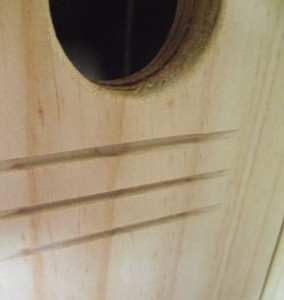
3. External Foot Holds
Grooves located just below the entrance hole allow adult birds to grip the exterior of the box prior to entry.
4. Internal Bird Ladder
Grooves located on the interior below the entrance hole provide an easier foothold for nestlings when ready to fly the nest.
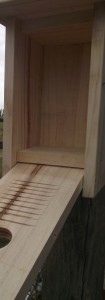 5. Weather proof fixings
5. Weather proof fixings
Exterior screws and Exterior Non-Toxic adhesives are used in our construction.
6. Stainless Steel Lock Pin
Stainless Steel Pin is installed at a downward angle to prevent the pin from working loose and being lost.
7. Inner Roof
Provides an extra layer of protection.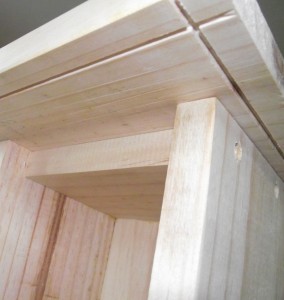
8. Timber
Our Nest Boxes are constructed from quality timber sourced from New Zealand local Radiata Pine plantations. All timber is completely chemical free! By ensuring all timber is kiln dried within 5 days of production there is no need for anti-sap stain chemicals or other treatments. We use timber a minimum of ¾ inch in thickness as this provides good durability and insulation.
9. Easy to use Fixing System
Creative woodcraft uses an easy to install fixing system on all of our Bird Nesting Boxes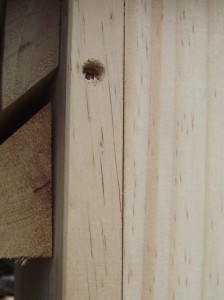
A GOOD BIRD NEST BOX
- Offers good protection against the elements….. “A drafty bird nest box wont allow the eggs to be kept warm!”
- Ventilation over and above the nest is critical to safe temperature control.
- Will keep water out, the entrance and ventilation holes should be protected against wind driven rains…. “The use of a good roof overhang will provide this”
- Will have an easy to open panel/door for inspection, monitoring and cleaning.
- Should be as predator proof as possible.
The Perfect Bird Nesting Box
A successful bird nest box is only one part of the entire system. Parts of the system include:
- Installing and mounting the nest box.
- Locating the nest box within good habitat.
- Sufficient predator controls.
Combine these factors with the most important element – YOU – and your commitment to actively manage the system and you will be very close to having “The Perfect Nest Box!”




